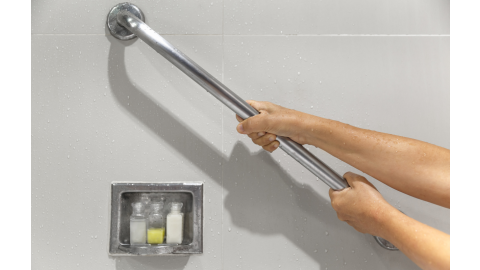Limit your child’s frustration while eating and avoid a meltdown with adaptive utensils and dishes. They can help your child begin self-feeding or continue to eat independently. Following the right steps can make things go more smoothly for you and your child with special needs.
9 Tips for Beginning Independent Self-Feeding
- Get ready for a mess of dropped, spilled, and smeared food. Prepare with bibs, easy to wipe trays, and washable tablecloths. The more independent your child can be, the faster he’ll figure out how to get the food into his hand and mouth.
- Start with finger foods that dissolve in your son or daughter’s mouth, like puffs. A pincer grasp is helpful but not necessary. Eating puffs or Cheerios might help this grip develop if it hasn’t already.
- Let your child hold the spoon for a while even if she seems to suck on it more than use it. She will gain exposure and might start to mimic you.
- The best silverware for your child will depend on his or her needs. The right cutlery can help with tremors, a poor range of motion, and other coordination problems. If your current silverware isn’t working, try another option.
- Provide hand-over-hand help. Put your hand over your child’s and go through the motions of scooping and putting the bite in their mouth. This helps your child learn what to do.
- Thicker liquids or soft foods are easier to scoop on a spoon. Think yogurt, applesauce, and mashed potatoes. You can even use a thickener with drinks, soups, and liquids to make them easier to swallow and reduce the risk of aspiration.
- The right plate can also turn meals into an enjoyable experience and less of a hassle. Make eating easier and reduce spills using plates with higher edges that suction cup onto the table or tray.
- Transitioning from a bottle to a sippy cup is another important step in self-feeding. Plus, it helps prevent tooth decay. Try offering your toddler a cup with a straw instead, as some young children find this easier. You can also demonstrate how it works or have a sibling drink from a sippy cup in front of your toddler.
- Offer help and encouragement to prevent your child’s frustration. If needed, take a break and try again at the next meal.
The right tools can help reduce tears and meltdowns during the transition to self-feeding. You’ll need patience and maybe some adaptive tools, but the hard work is worth seeing the growth in your child’s self-esteem and pride.
Medical Disclaimer: The information provided on this site, including text, graphics, images and other material, are for informational purposes only and are not intended to substitute for professional medical advice, diagnosis or treatment. Always seek the advice of your physician or other healthcare professional with any questions or concerns you may have regarding your condition.








 France
France Australia
Australia






